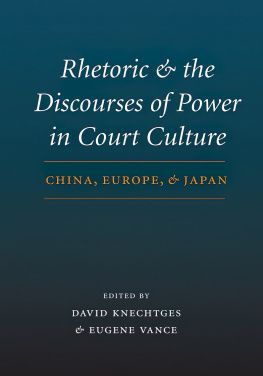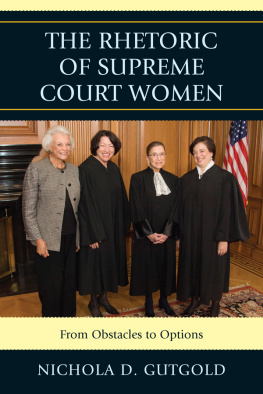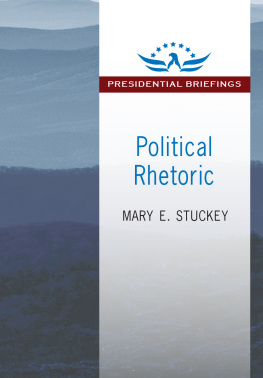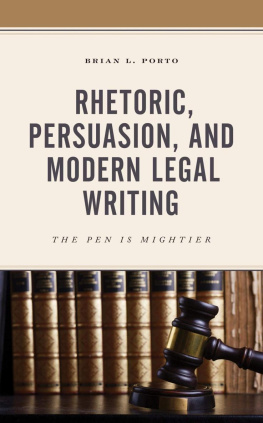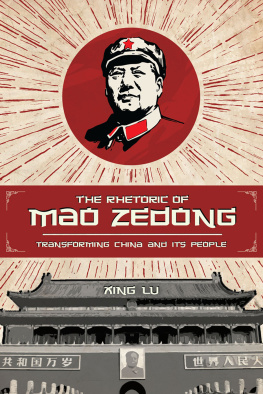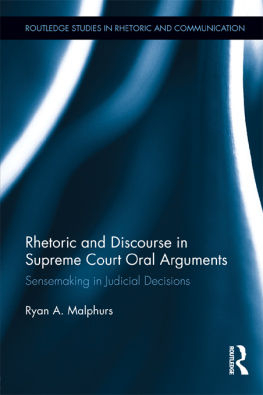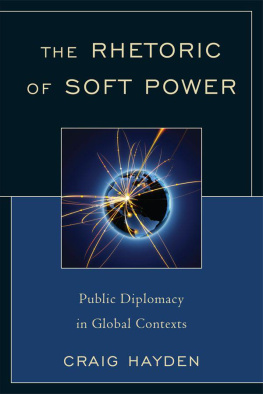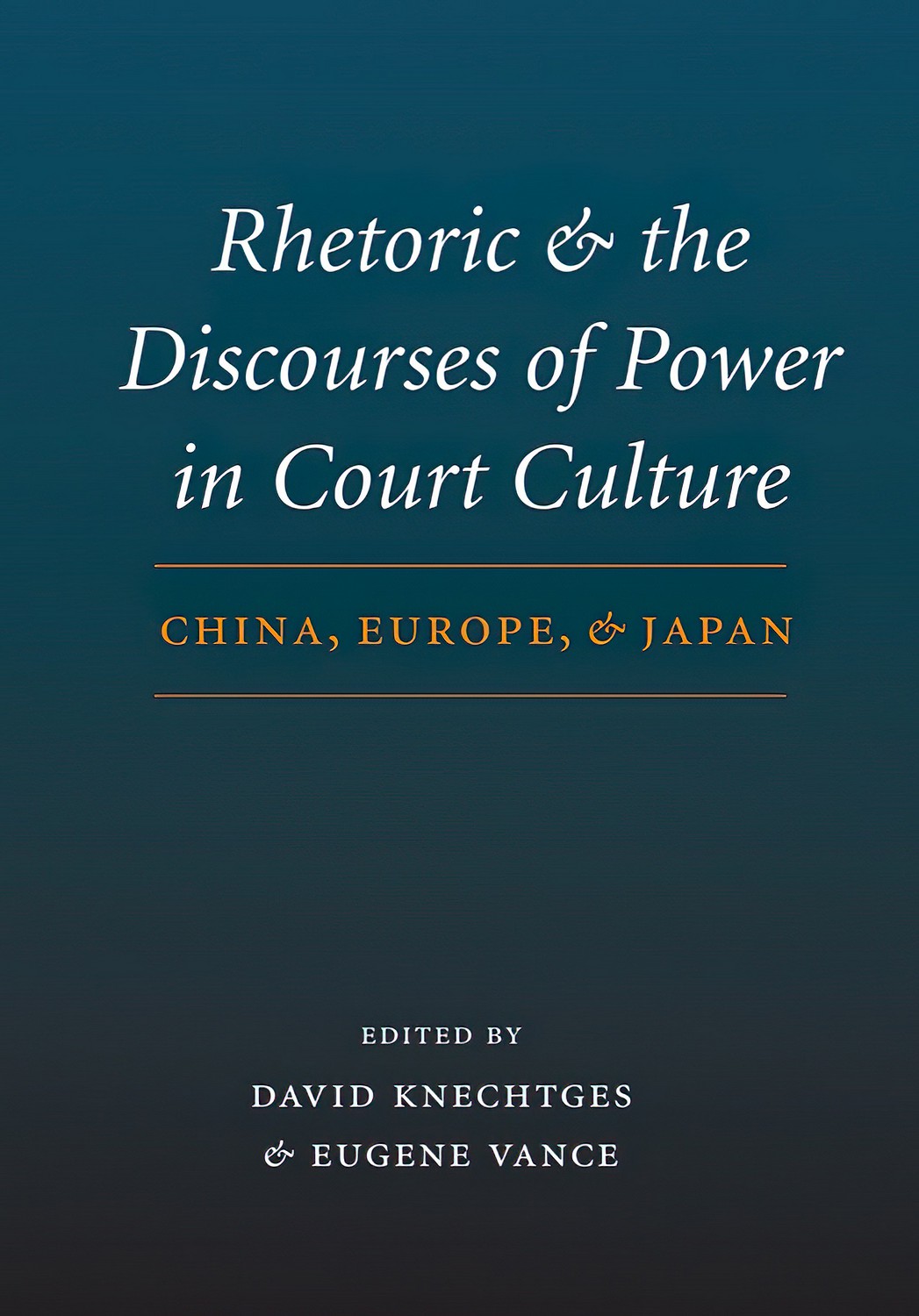Rhetoric and the Discourses
of Power in Court Culture
China, Europe, and Japan
Edited by
DAVID R. KNECHTGES
and EUGENE VANCE
UNIVERSITY Of WASHINGTON PRESS
Seattle and London
This publication was made possible in part by the assistance of a grant from the National Taiwan University. Additional support was provided by the China Studies Program, a division of the Henry M. Jackson School of International Studies at the University of Washington.
2005 by the University of Washington Press
Design and composition by Christopher Dakin
Printed in the United States of America
12 11 10 09 08 07 06 055 4 3 2 I
All rights reserved. No part of this publication may be reproduced or transmitted in any form or by any means, electronic or mechanical, including photocopy, recording, or any information storage or retrieval system, without permission in writing from the publisher.
University of Washington Press
P.O. Box 50096, Seattle, WA 98145
www.washington.edu/uwpress
Library of Congress Cataloging-in-Publication Data
Rhetoric and the discourses of power in court culture: China, Europe, and Japan /
edited by David R. Knechtges and Eugene Vance.
p. cm. Includes index.
ISBN 0-295-98450-3 (alk. paper)
1. Courts and courtiers. 2. China-History-221 b.c.-960 a.d.
3. Europe-History-476-1492. 4. Japan-History-Heian period, 794-1185.
I. Knechtges, David R. II. Vance, Eugene.
GT3520.K64 2005
395-dc22 2004022255
The paper used in this publication is acid-free and recycled from 20 percent postconsumer and at least 50 percent pre-consumer waste. It meets the minimum requirements of American National Standard for Information Sciences-Permanence of Paper for Printed Library Materials, ANSI Z39.48-1984.
Contents
by David R. Knechtges
by David R. Knechtges
by Scott L. Waugh
by Pauline Yu
by Steven D. Carter
by Ronald Egan
by Robert Joe Cutter
by Paul Edward Dutton
by Robert Borgen
by Stephen Owen
by Kuo-ying Wang
by Eugene Vance
by Arjo Vanderjagt
Acknowledgments
The articles in this volume were first presented at the conference Court Culture East and West in Cross-Cultural Perspective, held at National Taiwan University in November 1998. We wish to thank the College of Liberal Arts and its dean at that time, Lin Yaofu, for providing funding and hospitality for this scholarly gathering. We must also acknowledge the financial and moral sup- port we received from the Center for the Humanities, University of Washington. In particular, we wish to thank the former director of the center, Professor Leroy Searle. We must also express gratitude to Dean Lin and the College of Liberal Arts, National Taiwan University, and David Bachman, chair of the China Studies Program, for providing funds to sup- port the publication of this volume. Thanks are also owed to Deans Pauline Yu and Scott Waugh of U.C.L.A., who took time out of their busy schedules to read and comment on a draft of this volume. We must also mention the able assistance we received from Charles Sanft and Christopher Dakin, who helped prepare the manuscript. Funding to support their work was provided by the China Studies Program, University of Washington.
D.R.K.
G.V.
Introduction
David R. Knechtges
The conference Court Culture East and West in Cross-Cultural Perspective was the outgrowth of an international collaborative research project supported by the University of Washington, the University of California at Los Angeles, and National Taiwan University. The purpose of this project was to initiate regular meetings among a group of scholars from diverse fields so as to investigate the role of the court in the cultures of premodern China, Europe, and Japan. The group first met in 1994, and members of the core group have been meeting almost annually since that time. Participants are from a variety of disciplines: Chinese literature and history; European history, literature, and philosophy; and Japanese literature and history. The aim from the very beginning was not to attempt the impossible task of undertaking a comprehensive examination of courts but to focus on a select group from the Chinese, European, and Japanese traditions. By this approach, the group sought to identify productive strategies for studying both the court as a locus of power and its relationship to and influence on the norms of a larger culture.
This book explores the subject of the rhetoric and discourses of power in a variety of courts: Han, Tang, and Song dynasty China; medieval and Renaissance Europe; and Heian and Muromachi Japan. We have organized this examination of rhetoric around five broad areas: persuasion, taste, communication, gender, and natural nobility.
In Rhetoric of Persuasion, the authors explore the role rhetoric plays in justifying the actions of the court, especially the radical acts of seizing power, deposing a ruler, and setting up a new regime or dynasty. David R. Knechtgess The Rhetoric of Imperial Abdication and Accession in a Third-Century Chinese Court: The Case of Cao Pis Accession as Emperor of the Wei Dynasty is a study of the documents relating to the abdication of the last Han emperor and the accession of Cao Pi (187226), first emperor of the Wei dynasty. In founding the Wei dynasty in 220, Cao Pi had to depose the emperor of a dynasty that had ruled the Chinese Empire for more than 400 years. In an attempt to justify this act, members of Cao Pis princely court presented him with memorials citing evidence that the ruling cycle of the Han had run its course. The Han emperor, who had long been a puppet of the Cao family, issued edicts offering to cede the imperial throne to Cao Pi. Over a period of three weeks, Cao Pi went through an elaborate political ritual, in which he issued a series of written refusals to accept the imperial throne. These refusals became an important convention of Chinese court rhetoric, which the author terms the rhetoric of refusal. In The Court, Politics, and Rhetoric in England, 1310 1330, Scott Waugh focuses on two decades that are among the most tumultuous in English history, producing political discord, public executions, and the first deposition of an English king, Edward II. Observers described the disorder they witnessed within the ethical and ideological framework of court society. They applied the norms of courtly behavior and Christian morality, the judicial ideal of due process, and the political concept of the body politic to explain what had gone wrong. In their view, a vicious cycle of greed, rivalry, suspicion, and accusation tore the royal court apart, thus pitting courtiers not only against one another but against the king himself and resulting in brutal executions. Although the values of court culture may have been deeply ingrained in these writers, providing a yardstick for measuring and explaining the behavior of kings and magnates, they had little effect in stemming the violence that underlay the courtly veneer.
In Rhetoric of Taste, the authors examine the role of the court in determining aesthetic values, whether in consonance with or in contrast to broader literary and artistic tastes. Pauline Yu, in Poems for the Emperor: Imperial Tastes in the Early Ninth Century, examines an anthology, Yulan shi (Poems for imperial reading), compiled by the court official Linghu Chu (766837) for the Tang emperor Xianzong (r. 80621). She discusses this collection within the context of Tang court culture, the civil service examination, and other contemporary anthologies. Yu concludes that the anthology, which was later judged a rather unimpressive selection of poems in a uniform style, reflects an unsurprising imperial predilection for modulation and decorum. Steven D. Carters Claiming the Past for the Present: Ichijo Kaneyoshi and Tales of Ise poses the question, Who creates the grand narratives that inform our understanding of history? In the case of Japan, the obvious answer is the scholars of the imperial court, who were the first to commit facts to paper. This process began very early, in the courts of the Nara (71094) and Heian periods (7941184). By medieval times, the court had established a standard canon of literary and historical texts, as well as narratives that linked them together in a series purported to represent the history of the Japanese nation; however, close analysis of those same texts shows other possible readings that emphasize the role of other classes and their interests in mythological and historical events. Carter examines a famous commentary on Tales of Ise written by the renowned courtier-scholar, Ichijo Kaneyoshi (14021481); his primary concern is the claim that the text is a courtly narrative, the purpose of that claim being to construe the courtly narrative itself as the history of Japan. The chapter by Ronald Egan, The Emperor and the Ink Plum, is a study of the appropriation by the imperial court (late Northern Song dynasty, ca. 1080-1126) of aesthetic values that were first developed by wenren or literati painters. At the time of the appropriation, however, the wenren were out of favor politically; they were subject to banishment and their writings proscribed by imperial decree. Egan asks why the imperial court, and particularly Emperor Huizong, himself a noted painter, was attracted to the recent innovations in painting made by these discredited literati. Egan also assesses the responsibility the literati themselves bore for the obfuscation of the connections that had existed between literati and court painting.

